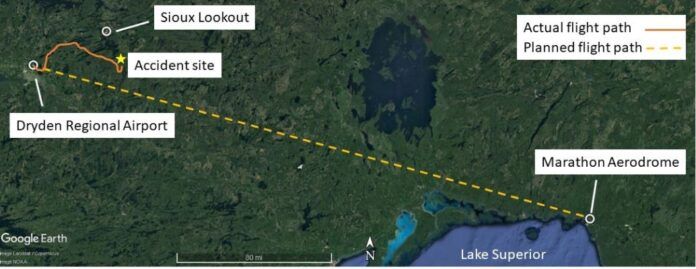A plane crash in Ontario in April that claimed the life of a Trail man wanted for a gang murder in Thailand was chiefly the result of darkness, the Transportation Safety Board has found.
Gene Karl Lahrkamp was one of four people killed when the privately registered Piper Cherokee crashed near Sioux Lookout, Ont. on April 29.
Days earlier Lahrkamp had been identified as the No. 2 most wanted man in Canada and a $100,000 reward was offered for information leading to his arrest.
Lahkramp was wanted in the death of Jimi Sandu, 32, whose body was found on Feb. 5 near a villa in Thailand. He suffered multiple gunshot wounds.
Police said Sandhu was an Indian citizen and former Canadian resident. In Canada, he was a member of the UN Gang in the Lower Mainland. He was deported to India in 2016 for “serious criminality.”
The Royal Thai Police said Sandhu was deliberately targeted by two Canadian gunmen who flew back to Canada in the days after the murder.
The plane in which Lahrkamp died was travelling from Dryden, Ont. to Marathon, Ont. The wreckage was found about 19 nautical miles from the Sioux Lookout Airport.
In its report released today, the board notes that it crashed in the woods in the dark, and an emergency beacon helped search and rescue find the site.
The report says under Canadian regulations, pilots are required to have completed five night takeoffs and landings in the six months before flying an aircraft with passengers on board at night, but the investigation found the pilot’s logbook didn’t identify any night flights in the previous six months.
“Flying at night involves numerous risks owing to poor visual cues,” the report states. “The fact that there are few or no visual references at night can lead to various illusions causing spatial disorientation due to the lack of discernible horizon.”
Flying over bodies of water or forests away from lighting is particularly difficult, the report adds: “These areas are referred to as black holes.”
The board said the flight did not meet requirements for operation under “marginal visual flight rules” and instead would have had to rely on flight instruments. However, neither the pilot nor a passenger who also held a commercial pilot license were certified to fly that way.
The plane was also 170 pounds (77 kg) over the maximum take-off weight, but no outstanding technical problems were found with the plane. Both fuel cells ruptured when the plane crashed, but the wreckage did not catch fire.




